Mystery of Squirrel Teeth & Malocclusion [GREAT PHOTOS]
You’ve probably seen squirrels chewing on nuts and wondered how they break through such a hard shell. Well, the truth is, their amazing squirrel teeth are how.

Let’s take a closer look at why squirrels have unique teeth and how they use them. We will also discover a bit more about some of the problems squirrels might encounter with their teeth and how wildlife rehabbers and rescue organizations handle them.
What Do You Know About Squirrel Teeth?
Squirrels possess an impressive set of 20 to 22 teeth, including their remarkable front teeth that never stop growing. This unique dental adaptation helps them tackle tough tasks like crunching nuts with ease!
Disclaimer: If you find a sick, injured, or orphaned animal, please don’t take on the responsibility of caring for it yourself. Please locate a licensed rehabber in your area, and remember, this is about the animal’s one chance at life. Resources to find a wildlife rehabber are at the end of the article.
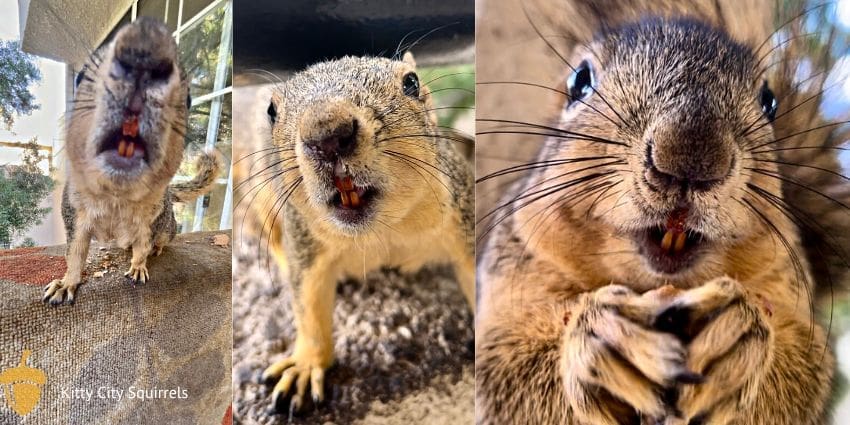
What Kind of Teeth Do Squirrels Have?
All rodents, including squirrels, have front teeth called elodont teeth, which means they never stop growing (literally).
The enamel coating on their teeth is tough. Underneath is the cementum layer, and below that is the dentin, or pulp, of the tooth.
A squirrel’s back teeth and even the roots resemble human back teeth.
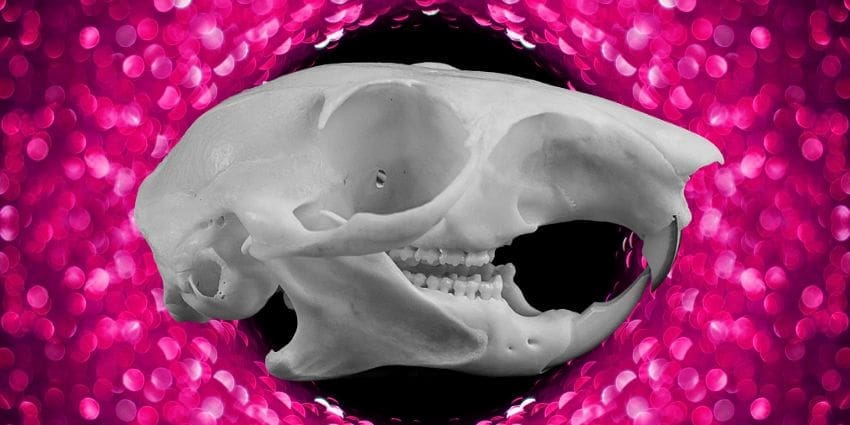
How Many Teeth Does an Adult Squirrel Have?
All squirrels have 22 teeth, including four incisors, four premolars, and 12 molars. There is one exception, and that is the Eastern gray squirrel, which has 24 teeth (two additional premolars).

Purpose of Squirrel Teeth
Squirrels use their teeth for various purposes, including eating, gnawing, and self-defense. Their specialized teeth are sharp and strong, allowing them to chew easily through rigid materials like bark or nuts.
Also, their teeth can be used as weapons if a squirrel feels threatened, and they can inflict severe damage with a single bite.
Dental Exam – Squirrel Teeth
Like all rodents, squirrels lack canine teeth; instead, a space called a diastema separates their incisors from their cheek teeth.
Incisors
The 4 incisors of a squirrel are chisel-shaped, long, and thin. These incisors are critical for gnawing.
Because they continue to grow, the top and bottom incisors must adequately align. They may become excessively long if they don’t because they can’t grind against each other.
A squirrel’s incisors have an enamel coating that develops beneath the gumline. Because their front teeth grow back, the squirrel must wear down its incisors for the rest of its life.
Premolars
Squirrels have four premolars, almost identical to the molars, and are sometimes called ‘cheek teeth.’
Molars
Squirrels have 12 molars. Their back teeth are large and have a thick enamel coating, so they don’t have to worry about wearing them down.
Rather than chew tough foods, they crush them with the help of their molars and powerful jaw muscles.
How Many Teeth Do Baby Squirrels Have?
A newborn squirrel is born without teeth; a baby’s first teeth don’t emerge until two weeks after birth. These first baby squirrel teeth are deciduous “milk teeth” and later give way to adult teeth.
Want to learn more about introducing foods to baby squirrels? Read this food guide by wildlife rehabber Karen Carpenter.
What is Malocclusion?
Malocclusion is the improper alignment of teeth or jaws. This condition results in either the top and bottom teeth not growing correctly or when the lower jaw is shorter than the upper jaw.
Squirrels must keep their teeth worn down by chewing hard nuts or wood.
Overgrown Squirrel Teeth
If the teeth can’t be worn down, the result is overgrown squirrel teeth. The overgrown squirrel teeth can pierce through their cheeks or the roof of the mouth; they cannot chew or close their mouths properly.
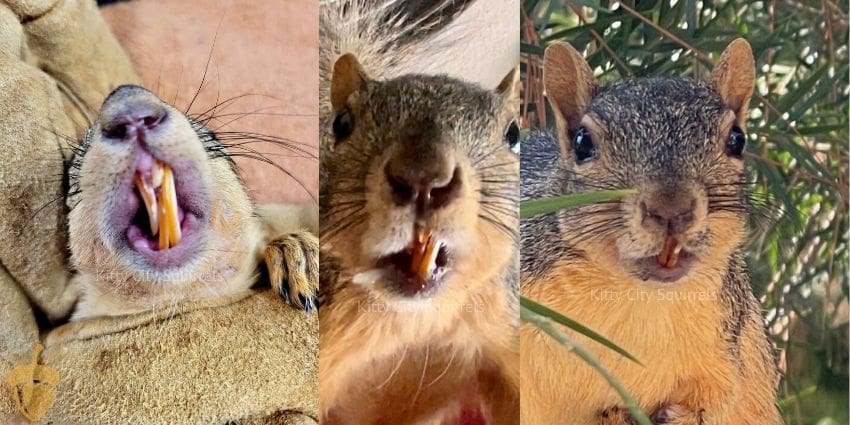
Without treatment, the condition results in death by starvation because squirrels cannot swallow or chew properly, losing their ability to eat.
Causes
There are a few different factors that can cause malocclusion in squirrels.
One of the most common causes is genetics. If a squirrel has parents or grandparents with malocclusion, they are more prone to develop it themselves.
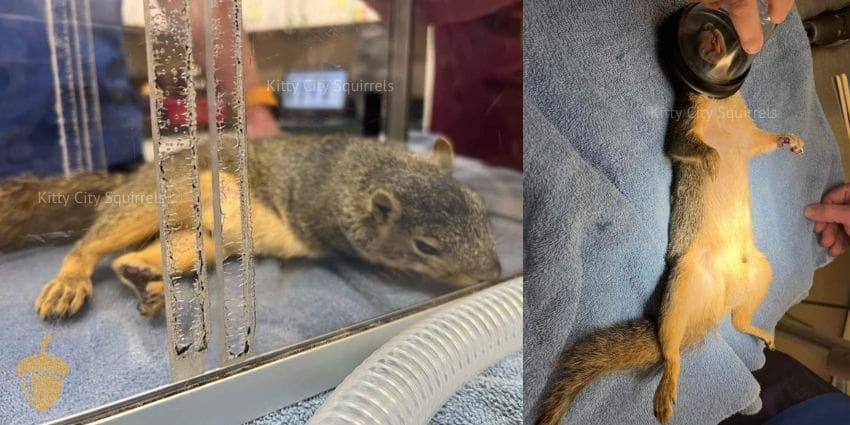
Another common cause is diet. If a squirrel eats many hard foods, its teeth can become misshapen and cause malocclusion.
In some cases, malocclusion can also be caused by a cleft palate or a traumatic fall that causes a face injury.
Treatment -Do Squirrels Need their Teeth Trimmed?
If their teeth are overgrown from malocclusion, then yes. The treatment will vary depending on the severity of the overgrown condition.
A general guideline is to trim or clip and file the front upper teeth and lower teeth biweekly for their entire life to keep them from growing too long. Depending on their alignment after regrowth, the time between trimmings may be extended.

Trimming the teeth does not cause pain, just as you can cut a person’s hair or fingernails without discomfort.
Squirrel teeth don’t have any nerves, so the animal doesn’t feel pain when trimmed.
Humane Treatment for Mal-Aligned Teeth in Wild Squirrels
If the squirrel can use their incisors and wear them down adequately, the teeth can be removed, but this action is for non-releasable squirrels only.
For most wild squirrels, the humane treatment is euthanasia. However, there are exceptional circumstances, like Ratatouille, Kitty City Squirrel’s amazing Wildlife Wonder Squirrel!
I want to thank all the wildlife rehabbers, I call them the two Karens – Karen C and Karon H, and Pip’s mom, Mrs. C., that have given me sound advice and education over the last year on how to best care for Ratatouille.
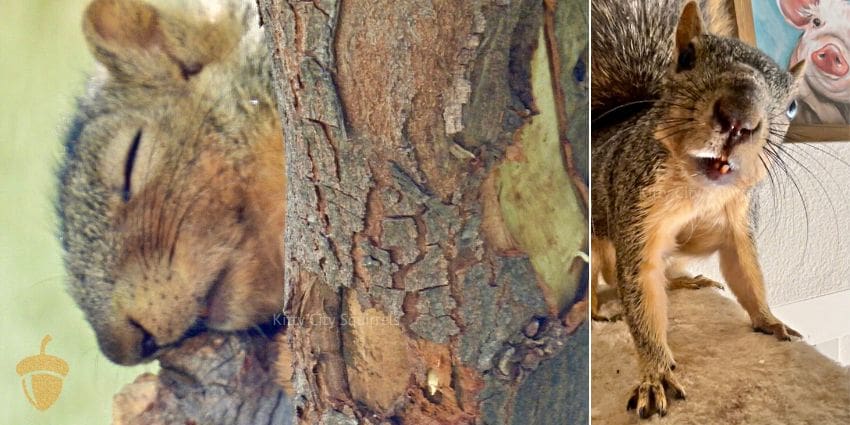
(R) after teeth trimming
Odontoma
A squirrel odontoma is an overgrowth of normal dental tissue that has grown irregularly.
In many cases, a squirrel odontoma does not cause any problems and does not require treatment.
However, in some cases, the growth can become large enough to interfere with the squirrel’s ability to eat or drink. If this occurs, surgical removal of the odontoma is necessary.
Do Squirrel Teeth Grow Back?
Yes, the two front and two lower squirrel teeth grow back. They grow so quickly that they are almost always at peak sharpness. They are so sharp because they are constantly worn down by chiseling away at their nuts and seeds.
Why Are Squirrel Teeth Orange?
The color of a squirrel’s tooth is a common curiosity, but there is a scientifically-based reason behind it.
Squirrels’ teeth are orange due to a buildup of iron-containing pigments in the enamel.
Over time, this iron accumulates, giving the teeth their orange color. I think they are the perfect shade of Nacho Doritos!
Cracking a Hard Shell
So, how do they break through a hard shell? It’s all about technique. A squirrel will grind, gnaw and chew to make a small hole. Then, they’ll insert their teeth and twist and turn, gradually widening the hole.
Once the hole is big enough, they’ll use their teeth to pry the two halves of the pecan, walnut, or almond. And voila! They’ve got their prize.
Of course, it’s not always that easy, but squirrels are persistent and will keep trying. After all, there’s always another nut waiting to be cracked.
Looking for a Wildlife Rehabber? Here are 3 Resources
Disclaimer: If you find a sick, injured, or orphaned animal, please don’t take on the responsibility of caring for it yourself. Please locate a licensed rehabber in your area, and remember, this is about the animal’s one chance at life.
- Squirrel Rehab Locator Map – input your zip code or city into the search bar of Google Maps.
- Animal Help Now – licensed rehabber directory
- Squirrel Connections – licensed rehabber directory by state
Subscribe to our Free VIP Squirrel Scoop Insider magazine to keep up with the latest happenings at Kitty City Squirrels!


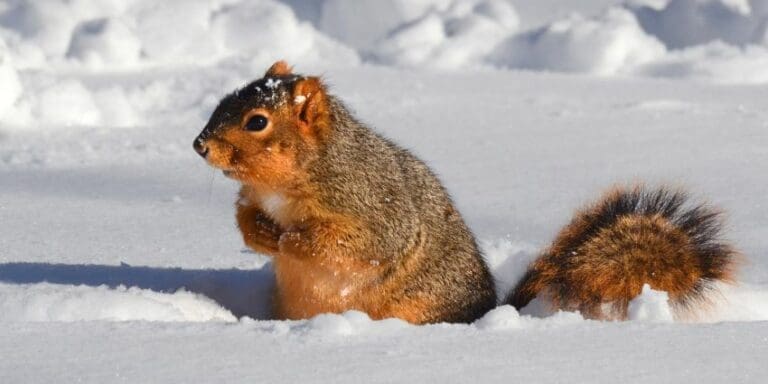


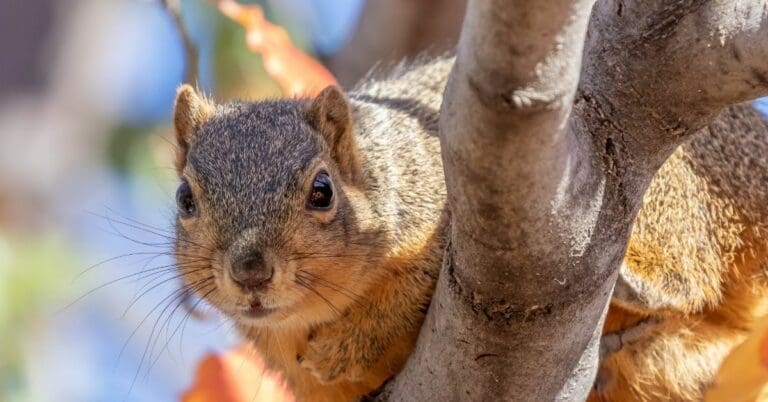
Thank you for this article! I learned something new about Eastern Greys having 2 more teeth…. Interesting.
Thank you, Sindey, for your comment. I just learned that as well while researching the topic. Thank you for your support and for reading the article. 🙂
Awwww, Ratatouille is adorable, and I’m so glad that he has you to watch after him. This is the first time I’ve learned about the number of teeth that squirrels have.